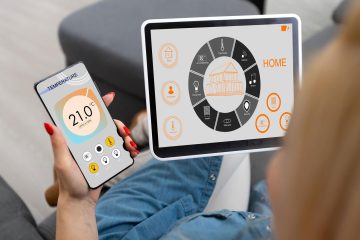In today’s digital age, gadgets like tablets, smartphones, and laptops are integral parts of daily life. While these devices often raise concerns about excessive screen time, they also hold great potential as tools for learning, creativity, and development. The key is not to dismiss gadgets altogether, but to use them thoughtfully to support kids’ education, skills, and overall well-being.
Here’s a guide on how to effectively train and teach kids using gadgets, while maintaining a balance between technology and other essential aspects of childhood development.
1. Establish Clear Goals for Gadget Use
Before introducing kids to new gadgets, it’s important to define the purpose behind their usage. Are you aiming to enhance their academic learning? Do you want to encourage creativity or improve their problem-solving skills? Setting clear goals helps you select the most appropriate tools and apps, as well as avoid unnecessary distractions.
For example:
- Educational Apps: There are numerous apps designed to teach math, science, language arts, and more in fun, interactive ways.
- Creative Tools: Digital drawing apps, music-making tools, and video editing software can foster creativity and artistic skills.
- STEM Games: Games that involve coding, logic, and engineering can introduce kids to the world of technology and innovation.
By being intentional about gadget use, you can ensure that each session adds value to your child’s learning journey.
2. Set Time Limits and Schedules
The American Academy of Pediatrics (AAP) recommends that children aged 2 to 5 should have no more than one hour of screen time per day, while older children can have more, but it’s crucial to set limits. Excessive screen time can affect kids’ sleep patterns, social skills, and even physical health, contributing to issues like poor posture or eye strain.
Here’s how to manage time effectively:
- Create a Routine: Set specific times for gadget use, ensuring that it doesn’t interfere with essential activities such as outdoor play, socializing, or family time.
- Balance Screen Time with Physical Activity: Encourage kids to take breaks from screens to move around, stretch, or engage in outdoor activities.
- Use Parental Controls: Many devices have built-in parental controls to limit screen time or restrict access to certain apps, which can help keep children on track.
By managing how and when gadgets are used, you can keep screen time productive and healthy.
3. Select Age-Appropriate Content
When it comes to gadgets, not all content is created equal. Kids are naturally drawn to games, videos, and apps that are visually stimulating, but it’s important to select content that aligns with their age and developmental stage.
- For Younger Kids (Ages 2-5): Opt for apps that focus on early literacy, numeracy, shapes, and colors. Interactive storybooks, simple puzzles, and memory games can be both fun and educational.
- For School-Age Children (Ages 6-12): Look for apps that promote problem-solving, critical thinking, and creativity. Platforms like Khan Academy, Duolingo, or Osmo offer excellent learning experiences in subjects ranging from math and science to languages.
- For Teens (Ages 13+): Allow access to more complex content such as coding tutorials, educational YouTube channels, or creative software for music production, graphic design, or video editing.
Additionally, always check reviews or ratings to ensure content is age-appropriate and free from harmful elements.
4. Teach Digital Literacy and Responsibility
In addition to using gadgets as tools for learning, it’s essential to teach kids about digital literacy, safety, and responsibility. With the internet at their fingertips, children need to understand the importance of navigating technology responsibly.
Here are some essential digital literacy skills to teach:
- Understanding Online Safety: Teach kids about privacy settings, avoiding sharing personal information, and recognizing online scams.
- Respectful Online Behavior: Discuss the concept of digital etiquette, including being kind and respectful when communicating online, as well as recognizing and handling cyberbullying.
- Time Management: Encourage kids to use gadgets for productive activities, like research or learning, and to balance screen time with offline hobbies and responsibilities.
- Critical Thinking: Help kids differentiate between credible and unreliable information online. Encourage them to ask questions, fact-check, and evaluate sources critically.
Teaching these skills early on can set the foundation for responsible and positive gadget use throughout their lives.
5. Incorporate Interactive Learning
The interactive nature of gadgets can be a powerful tool for engaging kids in their education. Instead of passive consumption (watching videos or playing games without learning), encourage active participation that promotes engagement and creativity.
Some ways to incorporate interactive learning include:
- Gamified Learning: Use educational games or apps that integrate fun challenges with learning objectives. For example, math games like Prodigy or language apps like Babbel allow kids to progress through levels as they master concepts.
- Virtual Field Trips: With apps and websites like Google Earth or National Geographic Kids, kids can explore the world from the comfort of home, learning about different countries, animals, and historical landmarks.
- Coding and Robotics Kits: Platforms like Kano or Lego Mindstorms combine hands-on building with digital coding, allowing kids to create their own games, robots, or websites.
These interactive experiences engage kids on multiple levels, making learning more enjoyable and impactful.
6. Model Healthy Gadget Habits
Children often learn by example, so it’s essential for parents and caregivers to model healthy gadget use. If you’re constantly glued to your phone or tablet, your child is likely to imitate that behavior. Here’s how to model balance:
- Set Tech-Free Zones: Designate certain areas of the home, like the dining table or bedrooms, as tech-free zones where family members engage in face-to-face conversation or offline activities.
- Use Gadgets Together: Use technology as a bonding experience by engaging with your child on educational apps, playing interactive games, or exploring new content together.
- Limit Distractions: When you do use gadgets, ensure that you’re fully present. For example, avoid checking work emails during family time or screen-sharing moments.
When kids see that technology is part of a balanced life, they’re more likely to adopt healthy habits themselves.
7. Encourage Creativity and Problem-Solving
One of the most valuable benefits of gadgets is their ability to promote creativity and problem-solving. Many apps, games, and tools are designed to encourage kids to think critically, experiment, and build.
- Creative Apps: Apps like Tynker (for coding), Procreate (for digital drawing), or GarageBand (for music) allow kids to explore and create with technology.
- Maker Movement: Encourage kids to get involved in the maker culture—whether it’s through building with Lego, experimenting with 3D printing, or trying DIY science projects on YouTube. The emphasis on hands-on learning can help develop technical skills and foster an entrepreneurial mindset.
By integrating gadgets into creative and problem-solving activities, you provide kids with the opportunity to not only learn but innovate.
Conclusion: The Future of Learning with Gadgets
Gadgets have the potential to revolutionize the way kids learn, create, and engage with the world around them. However, it’s up to parents, educators, and caregivers to ensure that technology is used thoughtfully and responsibly. By setting clear goals, selecting age-appropriate content, managing screen time, and teaching digital literacy, we can help kids maximize the benefits of technology while minimizing the risks.
With the right balance and guidance, gadgets can become powerful allies in shaping curious, creative, and tech-savvy kids who are ready to thrive in an increasingly digital world.





